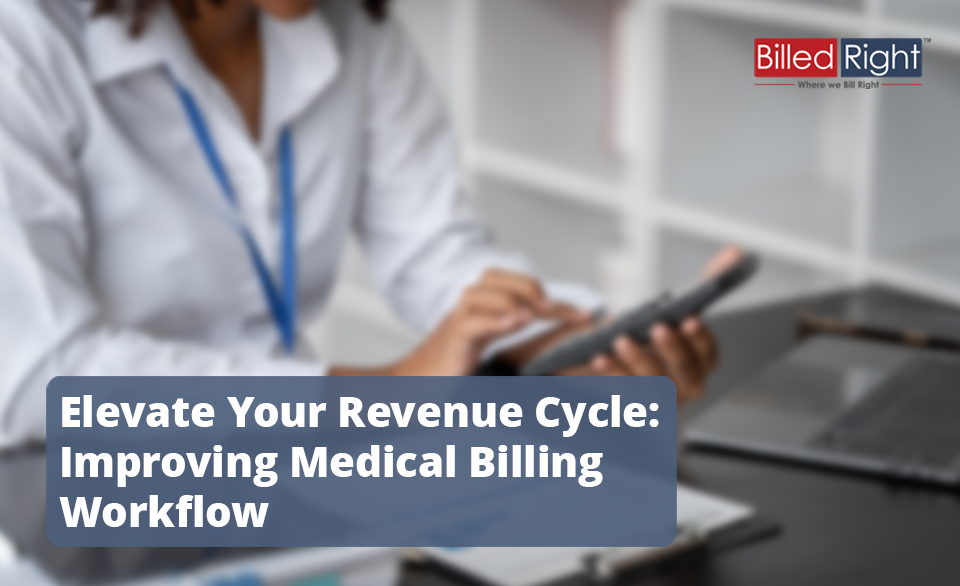Elevate Your Revenue Cycle: Improving Medical Billing Workflow

Understanding the Medical Billing Workflow
Effective management of the medical billing workflow is crucial for any healthcare practice aiming to optimize its revenue cycle. Understanding the various components of this process helps in identifying opportunities for improvement.
Overview of the Revenue Cycle
The revenue cycle encompasses all administrative and clinical functions that contribute to the capture, management, and collection of patient service revenue. This cycle is iterative and typically follows a structured sequence of events from patient registration to final payment received. Key stages include:
- Pre-Registration: Gathering patient information prior to their visit.
- Patient Registration: Collecting and verifying demographic and insurance details.
- Charge Capture: Documenting services provided to the patient.
- Claim Submission: Sending billing information to insurance providers.
- Payment Posting: Recording payments received from patients and insurers.
- Accounts Receivable Management: Monitoring unpaid claims and follow-ups.
The efficiency of the revenue cycle directly impacts the financial health of a medical practice. A streamlined process can reduce delays and improve cash flow.
Key Components of Medical Billing Workflow
The medical billing workflow consists of several integral components that work together to ensure accurate billing and effective revenue cycle management. These components include:
| Component | Description |
|---|---|
| Data Entry | Inputting patient and insurance information into billing systems. |
| Coding Accuracy | Ensuring the correct application of codes for services and diagnoses. |
| Charge Capture | Documenting all services rendered to the patient accurately to ensure proper billing. |
| Claim Processing | Preparing and submitting claims to insurers for reimbursement. This involves understanding billing vs. coding. |
| Payment Collection | Following up on unpaid claims and collecting balances from patients. |
| Compliance | Adhering to medical billing guidelines and rules to avoid penalties and ensure successful claims processing. |
Maintaining accuracy throughout these stages not only enhances operational efficiency but also helps in minimizing claims denials. Understanding the roles of medical coding, including ICD-10 codes explained and CPT codes in medical billing, is essential for effective revenue generation.
By focusing on each component of the medical billing workflow, healthcare professionals can identify weaknesses and implement strategic improvements that elevate the overall financial performance of their practice.
Improving Medical Billing Workflow
Enhancing the medical billing workflow is crucial for healthcare professionals aiming to optimize revenue cycles. This can be achieved through various strategies, including streamlining data entry processes, enhancing coding accuracy, and embracing technological solutions.
Streamlining Data Entry Processes
Data entry is a foundational element of the medical billing workflow. Inefficient data entry can lead to errors that affect billing accuracy and revenue. By implementing standardized processes and utilizing templates, practices can reduce time spent on manual input.
Practices can benefit from training staff on data entry best practices and leveraging tools that minimize duplicate entry.
Enhancing Coding Accuracy
Accurate coding is vital for ensuring appropriate reimbursement and avoiding denials. Healthcare professionals should prioritize ongoing training in medical coding. Understanding the latest updates in coding systems, such as ICD-10 codes and CPT codes, can reduce the incidence of incorrect codes.
Continuous education programs can improve the competency of coding staff and ensure they are up-to-date with coding guidelines and rules.
Embracing Technology Solutions for Efficiency
Technology offers numerous tools to enhance the medical billing workflow. Electronic health record (EHR) systems integrated with medical billing software can automate many aspects of the billing process, improving accuracy and efficiency.
Healthcare organizations should also consider AI-driven solutions that assist in coding and billing. These systems can analyze patient data to suggest appropriate codes, further reducing error rates.
By leveraging technology and advanced billing software, healthcare providers can streamline their workflow and enhance the overall revenue cycle.
Improving the medical billing workflow entails a multifaceted approach focusing on data entry efficiency, coding accuracy, and technology integration. Each of these elements plays a significant role in optimizing the revenue cycle for healthcare professionals.







